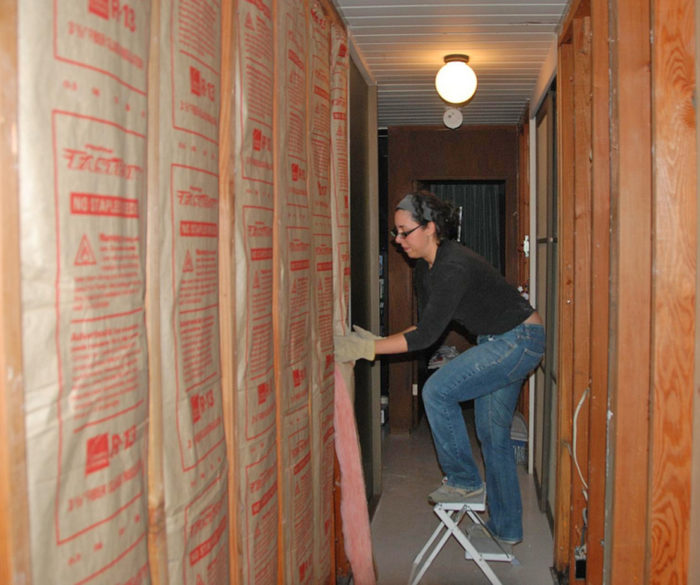
Image Credit: Nick Nguyen / CC BY-SA 2.0 / Flickr
By KHALIL SHAHYD
When her furnace started acting up, Alicia Dickenson knew her family had a problem. “I’m not going to have money for a new furnace,” the Ohio resident told her local paper. “How am I going to make it through the next winter?” When Dickenson found out that she qualified for home weatherization — including an upgraded, more efficient furnace — her relief was immense. “Huge,” she said.
Dickenson’s home is one of about 7 million low-income residences that have been improved through the federal government’s Weatherization Assistance Program (WAP). Weatherization services provide physical improvements to homes in order to reduce energy consumption and provide greater safety within homes. For 40 years, this program has helped cash-strapped families make it through not just one winter, but many winters ahead. Under President Trump’s new budget proposal, however, this tremendously successful program would be eliminated, threatening to leave poor families in the cold.
Many low-income and vulnerable households have few residential options but to rely on poor housing quality that result from residential segregation, long-term neighborhood disinvestment and deferred maintenance of the housing stock. These homes tend to be energy inefficient, impacting the stability of families due to high utility bills and recurring illnesses from inadequate indoor air quality. Struggling families sometimes spend more than 20% of their incomes on electricity and heat — far more than the national average of 2.7%.
For these people, a cold winter can bring hard choices: Heat or medicine? Utilities or groceries? Or hidden dangers: “Space heaters involved in 79% of fatal home heating fires,” when building heating systems are inadequate.
Long waiting lists for help
A community service group in Maine says it received nearly 8,000 calls about heating assistance last year. In many states, waiting lists for weatherization can number more than 1,000 in some rural counties and much higher in many urban centers. Until significant budget increases were passed as part of the 2009 American Reinvestment and Recovery Act (ARRA), weatherization assistance programs were seen as emergency services and were never funded adequately to meet the needs for services.
Leveraging state and local resources to complement federal weatherization funds can help to extend services to more people. Energy Efficiency for All, a 12-state campaign partnering environmental and efficiency advocates with advocates for affordable housing, is doing just that, leveraging utility efficiency investments to better serve affordable multi-family housing communities.
Across the country, only about 35,000 homes can enroll in the WAP. They are the lucky ones. Their homes are more comfortable, less drafty, stay warmer in winter, cooler in summer, and save residents an average of $283 every year on energy costs. For people who live with “skinny” budgets every day, that savings frees up funds for other necessities — food, health, school supplies.
But the benefits of the program don’t stop with those families. Weatherizing homes in places like Coalport, Pennsylvania, or St. Louis, Missouri, requires a local, skilled workforce to pinpoint where homes are losing energy and find ways to make them more efficient, whether it’s by insulating attics and walls, weatherstripping and caulking, or replacing outdated equipment.
In a typical year, the program supports 8,500 jobs, and even launches people on new career paths. Jasmine Romero, a young Native American woman from New Mexico, trained in weatherization at a local community college. She’s gone from living in her car to being on track to become the first female weatherization quality control inspector/auditor in the state.
All things considered, big returns on investment
When we invest in weatherization our whole society benefits. Boosting energy efficiency also means we avoid the cost of building out expensive energy infrastructure like power plants and transmission lines, reducing everyone’s energy-related utility cost. And everyone’s health improves when we help stabilize the climate and reduce the amount of hazardous mercury, sulfur dioxide, and particulate matter spewing out of power-plant smokestacks and furnaces. Every year WAP cuts America’s climate pollution by two million metric tons.
Recent analyses of WAP data show that the energy savings alone more than recoup costs by a factor of 1.4. When you factor in other gains, such as improved health and fewer fires from faulty space heaters, WAP generates $4 in benefits for every dollar invested.
Despite these widespread benefits to the nation as a whole, the potential of energy efficiency in low-income housing is largely overlooked. Nearly 10 million people live in affordable multifamily housing, and about half of these residences were built 50 years ago. Increasing energy efficiency in these homes could cut electricity use as much as 32%. In states like Michigan, Missouri, and Pennsylvania, the cumulative benefits top $1 billion by 2030. This is an area that needs more investment, not less.
Weatherization assistance is more than a lifeline for poor families — it’s a smart investment in energy efficiency that creates local jobs, eliminates the need for expensive new power plants, reduces pollution, and saves money for taxpayers nationwide. The Trump Administration may not believe in global warming, but it is supposed to recognize a great investment when it sees one. More details of the president’s budget will be revealed in May, but it’s clear that a “starvation” budget that freezes out struggling families should never get past Congress.
Khalil Shahyd is project manager for the urban solutions program at the Natural Resources Defense Council. This post was originally published at the NRDC Expert Blog.
Weekly Newsletter
Get building science and energy efficiency advice, plus special offers, in your inbox.




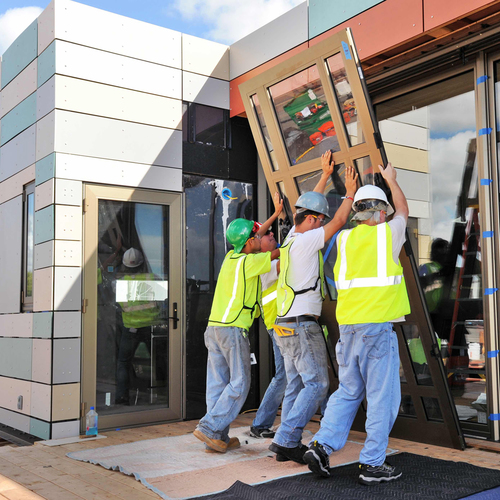
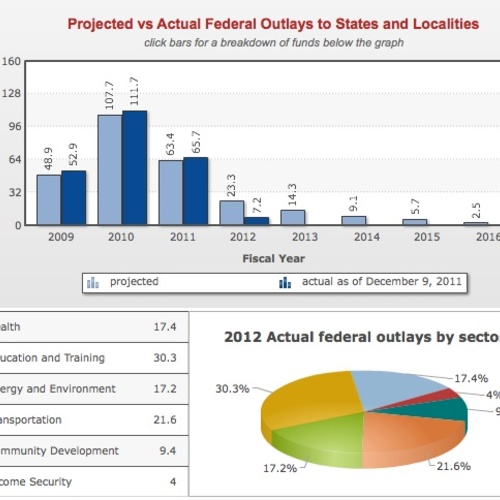
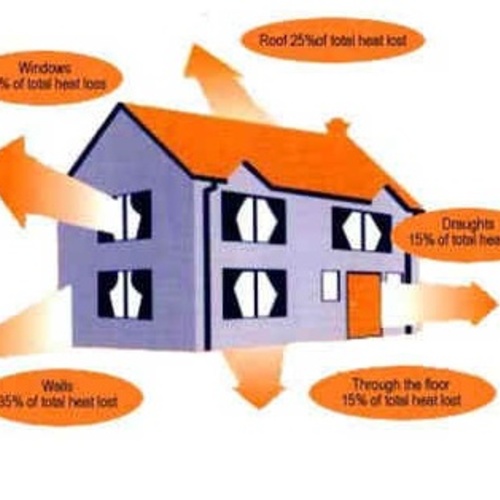
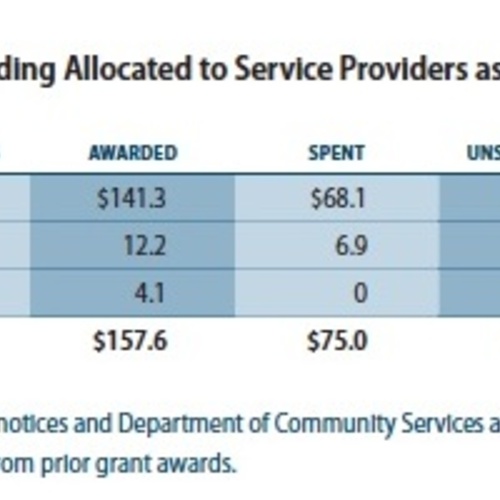






3 Comments
some additional info
Some additional info about WAP many people don’t realize:
• The WAP program is 35+ years old and is run by the Department of Energy. It’s a program that came into being with a lot of the other big social safety net programs we take for granted now . . . Social Security, Medicare, Medicaid, etc.. But unlike those programs, which generally affect ourselves or at least someone we know, weatherization has always been under the radar. It’s one of those programs for ‘other’ people, in the neighborhoods we don’t go or the places we only hear about in the news (often bad).
• The program has persisted as long as it has because of genuine bipartisan support; progressives like it because it helps people, and conservatives like it because it saves money. Most people have no idea of the vast amounts paid through their utility bills to subsidize people at 200% or less of their state poverty level. Weatherization directly affects this; the money saved by the direct recipients also goes back into our own pockets.
• Energy-saving items installed by WAP must meet a Savings to Investment Ratio (SIR) of 1.0 or more. Which means the energy savings of any measure (furnace, insulation, air sealing, etc.) must pay for itself at least once over its lifetime. So a 1.0 SIR means an item pays for itself, a 2.0 SIR means an item pays for itself twice, etc.. As a corollary, people often think WAP also pays for items like replacement windows and doors . . . this is rare (because of their initial expense, these items generally do not generate those savings).
• As mentioned in the article, WAP is both a job generator and a program that trains people in construction skills. As a former architect now working for a state WAP program, I’ve heard plenty from contractors about the growing lack of interest in the trades. WAP is a rare program that encourages it. In addition, most WAP programs are run through county Community Action Agencies, which are often prime employers in poorer/rural counties.
• Some numbers: during ARRA, the WAP program weatherized 750,000 homes nationwide, with an estimated energy savings of $320 million annually. Over the lifetime of an average water heater, the program is expected to repay what was spent during ARRA. In addition, 13,000 people were trained in construction skills, and the program was 2nd out of 200 federal programs in job creation.
WAP is quite simply a program that is increasingly rare in today’s politics . . . one that makes sense. It’s also a soft target for politicians trying to score cheap points. And as anyone in the trades knows, tearing something down is easy. It’s building something that’s hard.
Response to Patrick Stuart
Patrick,
Social Security was signed into law in in 1935, when my father was 9 years old. I don't remember it.
However, my memory certainly stretches back to 1976, when the Weatherization program was established. That's 41 years after the establishment of Social Security -- so these two programs only seem as if they date from the same era if you are a recent college graduate.
You are also making a lot of class assumptions when you write that "unlike those programs" -- programs like Social Security -- "which generally affect ourselves or at least someone we know, weatherization has always been under the radar. It’s one of those programs for ‘other’ people, in the neighborhoods we don’t go."
The Weatherization Assistance Program is active in neighborhoods where I live, work, and shop, and many of my friends and neighbors have benefited from the program. Evidently you live in a different kind of neighborhood.
Concerning the rest of your comments: I couldn't agree more. The Weatherization Assistance Program does wonderful work and deserves our support.
-- Martin Holladay
clarified
Some clarifications:
• Didn’t mean to imply that SS was created at the same time as WAP. However, the budgetary accounting system for SS was changed in the 1960’s so that it could be judged on a level playing field with other programs, many created around the same time. And WAP being created roughly a decade later still puts it in a similar time frame.
• As stated in the opening paragraph, an Ohio resident didn’t realize she qualified for weatherization. That’s not a class assumption. The only qualification for WAP is income, and location doesn’t matter. Obviously, some areas will have more familiarity than others, but my experience is that most people are unfamiliar with the program. Your mileage may vary.
Log in or create an account to post a comment.
Sign up Log in